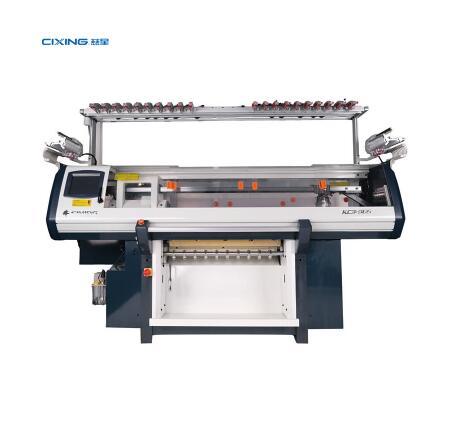The Role of Flat Knitting Machines in Customizing Knitwear
2024-12-10
Flat knitting machines are revolutionizing the world of fashion and textiles, especially in the realm of customized knitwear. These machines offer unparalleled flexibility, precision, and efficiency, making them a cornerstone of personalized garment production. Here's how flat knitting machines are playing a pivotal role in customizing knitwear.
1. Flexibility in Design
Flat knitting machines excel in producing intricate patterns and designs, which are essential for customized knitwear. With programmable features and advanced software integration, these machines enable:
- Complex Patterns: From cable knits to jacquards and intarsia, flat knitting machines can handle diverse design requirements.
- Variable Stitch Types: Seamlessly transition between rib, plain, and other stitch types within a single garment.
- Customization by Individual Preferences: Designers can input unique patterns or logos to tailor products to specific customer needs.
2. Precision and Accuracy
Flat knitting machines ensure high precision in producing garments with specific measurements and designs. Their advanced features allow for:
- Exact Sizing: Perfectly fitting garments based on precise body measurements.
- Consistent Quality: Uniform stitches and consistent tension throughout the fabric.
- Error Minimization: Automated processes reduce human errors, ensuring designs come out as intended.

3. On-Demand Production
The ability to produce garments on demand is a game-changer for customized knitwear:
- Quick Turnaround: Flat knitting machines enable rapid prototyping and production, allowing customers to receive their orders faster.
- Reduced Waste: Produces only what is needed, aligning with sustainable practices.
- Scalability: Efficiently handles single or small-batch production without compromising on cost or quality.
4. Seamless Integration with Technology
Modern flat knitting machines leverage technology to enhance customization:
- CAD Systems: Designers can use computer-aided design (CAD) software to create detailed patterns and upload them directly to the knitting machine.
- Digital Printing Integration: Incorporates digital patterns for unique textures and appearances.
- IoT and Automation: Remote monitoring and adjustments allow for precise customization and process optimization.
5. Versatility in Materials
Flat knitting machines work with a wide range of yarns and fibers, providing options for different styles and functions:
- Luxury Fibers: Custom garments can be made from cashmere, silk, or alpaca for premium clients.
- Performance Materials: Specialized yarns for sportswear or medical textiles.
- Eco-Friendly Choices: Organic cotton or recycled yarns cater to environmentally conscious customers.
6. Applications in Knitwear Customization
Flat knitting machines are used across various industries to produce:
- Personalized Fashion: Custom-fit sweaters, cardigans, and dresses.
- Teamwear and Uniforms: Unique designs for sports teams, schools, or organizations.
- Accessories: Hats, scarves, and gloves with individualized patterns.
- Technical Textiles: Custom compression garments or medical support wear.
7. Sustainability and Ethical Manufacturing
Flat knitting machines align with sustainable and ethical production practices:
- Zero-Waste Design: Whole-garment knitting technology eliminates fabric waste.
- Energy Efficiency: Modern machines consume less power compared to traditional methods.
- Localized Production: Enables on-demand manufacturing closer to the end-user, reducing carbon footprints.
Conclusion
Flat knitting machines have transformed the knitwear industry by enabling unparalleled customization and efficiency. Whether producing a bespoke sweater or a batch of personalized accessories, these machines meet the growing demand for individuality and sustainability in fashion. With continuous advancements in technology, flat knitting machines are set to play an even more significant role in the future of customized knitwear.


